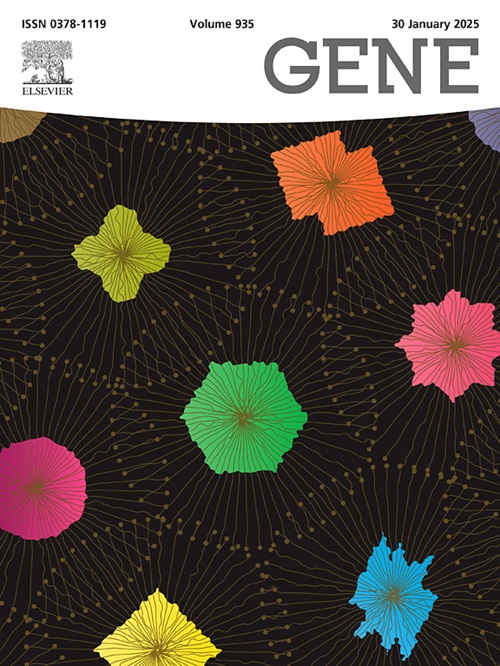miR-660:人类癌症发病机制和治疗意义的新调控因子
IF 2.6
3区 生物学
Q2 GENETICS & HEREDITY
引用次数: 0
摘要
MicroRNAs (miRNAs)是调节基因表达的非编码rna。其中,位于Xp11.23染色体上的miR-660由于其在各种生物学背景下的异常表达,其在癌症中的作用被越来越多的研究。它受8种相互竞争的内源性rna (ceRNAs)调控,这增加了其功能的复杂性。miR- 660靶向PI3K/AKT/mTOR、STAT3、Wnt/β- catenin、p53、NF - κB、RAS等6条通路中的19个基因,影响细胞周期、增殖、凋亡和侵袭迁移。它在肺腺癌(LUAD)、胰腺导管腺癌(PDAC)和肝细胞癌(HCC)中对顺铂、吉西他滨和索拉非尼等化疗药物的耐药中也起作用,从而突出了其临床重要性。此外,利用脂质体作为纳米载体为增强癌症药物传递提供了一条有希望的途径。我们的综合研究不仅阐明了miR-660及其cerna的异常表达模式、生物学功能和调控网络,而且深入研究了所涉及的复杂信号通路。我们设想我们的研究结果将提供一个强大的框架,并作为未来miR-660研究的开创性参考,促进癌症研究的进步,并可能催化癌症诊断和治疗范式的突破。本文章由计算机程序翻译,如有差异,请以英文原文为准。

miR-660: A novel regulator in human cancer pathogenesis and therapeutic implications
MicroRNAs (miRNAs) are non-coding RNAs that regulate gene expression. Among these, miR-660, located on chromosome Xp11.23, is increasingly studied for its role in cancer due to its abnormal expression in various biological contexts. It is regulated by 8 competing endogenous RNAs (ceRNAs), which adds complexity to its function. miR- 660 targets 19 genes involved in 6 pathways such as PI3K/AKT/mTOR, STAT3, Wnt/β-catenin, p53, NF‑κB, and RAS, influencing cell cycle, proliferation, apoptosis, and invasion/migration. It also plays a role in resistance to chemotherapies like cisplatin, gemcitabine, and sorafenib in lung adenocarcinoma (LUAD), pancreatic ductal adenocarcinoma (PDAC), and hepatocellular carcinoma (HCC), thus highlighting its clinical importance. Additionally, leveraging liposomes as nanocarriers presents a promising avenue for enhancing cancer drug delivery. Our comprehensive study not only elucidates the aberrant expression patterns, biological functions, and regulatory networks of miR-660 and its ceRNAs but also delves into the intricate signaling pathways implicated. We envisage that our findings will furnish a robust framework and serve as a seminal reference for future investigations of miR-660, fostering advancements in cancer research and potentially catalyzing breakthroughs in cancer diagnosis and treatment paradigms.
求助全文
通过发布文献求助,成功后即可免费获取论文全文。
去求助
来源期刊

Gene
生物-遗传学
CiteScore
6.10
自引率
2.90%
发文量
718
审稿时长
42 days
期刊介绍:
Gene publishes papers that focus on the regulation, expression, function and evolution of genes in all biological contexts, including all prokaryotic and eukaryotic organisms, as well as viruses.
 求助内容:
求助内容: 应助结果提醒方式:
应助结果提醒方式:


